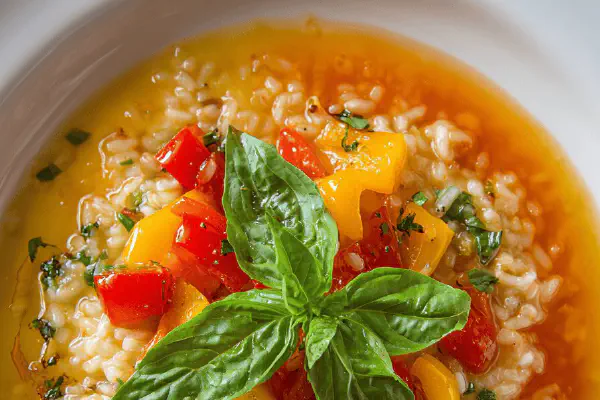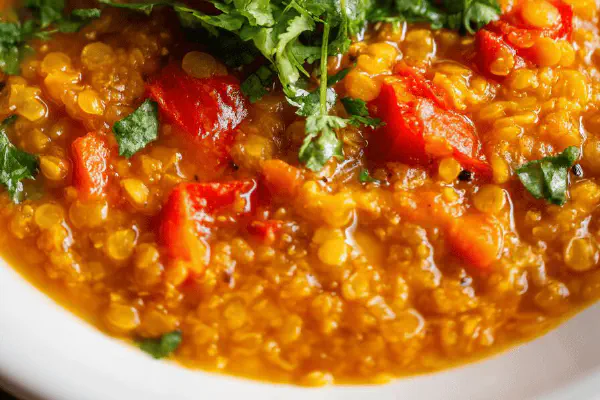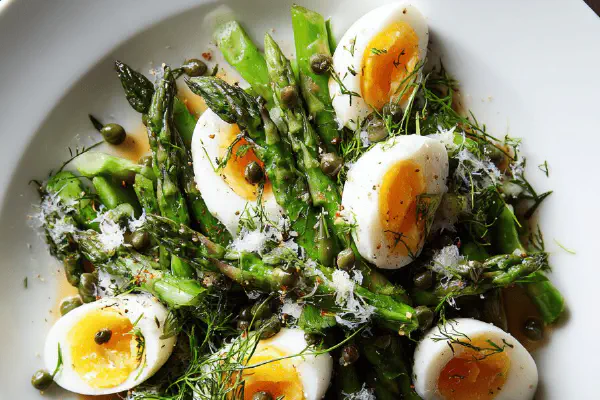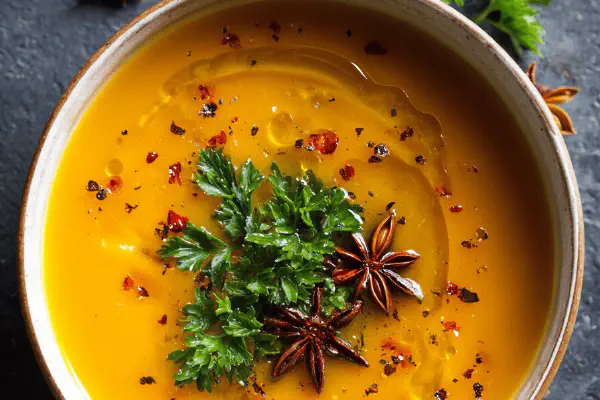Two-Tone Pepper Soup

By Emma
Certified Culinary Professional
Ingredients
- 3 yellow bell peppers halved and seeded
- 1 small shallot minced
- 50 ml olive oil
- 25 ml converted white rice
- 550 ml chicken broth (or vegetable broth)
- Salt and freshly ground pepper
- 3 red bell peppers halved and seeded
- 2 garlic cloves minced
- 20 ml balsamic vinegar
- Fresh basil leaves for garnish
About the ingredients
Method
Yellow Pepper Soup
- Set oven rack near top and preheat broiler. Lay yellow pepper halves skin side up on a baking sheet. Broil until skin blackens and blisters, watch close to avoid burning. Transfer to a covered bowl or sealed container; steam loosens skin, making it easy to peel. Peel peppers when cool enough to handle, discard charred skin carefully.
- In a medium saucepan, warm olive oil over low heat. Add minced shallot, cook gently without browning until fragrant and translucent. Add rice, stir well to coat grains. Pour in broth and chopped yellow peppers. Season with salt and pepper. Cover and simmer on very low heat. Rice should soften and thicken soup, about 20 minutes but watch texture closely; too mushy ruins body.
- Remove from heat, blend until velvety smooth with immersion blender or countertop blender in batches. Adjust seasoning. Keep warm.
Red Pepper Soup
- Repeat broiling process with red peppers — same blackened skin step. Steam sealed to loosen skin and peel carefully. In another saucepan, heat a splash of olive oil over low heat. Add minced garlic and a touch of shallot if desired, sweat gently to avoid burning garlic bitter notes.
- Add vinegar to deglaze pan, scraping bottom to lift flavor bits. Toss in rice, stir to coat. Add chopped peeled red peppers and broth. Simmer covered on very low heat 18-22 minutes until rice is tender. Puree and season to taste.
Assembly
- Grab a wide shallow bowl. Place a 7 cm ring mold at center. Pour yellow soup inside the ring. Remove ring gently to keep shape crisp. Spoon red soup around yellow central portion. Garnish with fresh basil leaves scattered or a small sprig on yellow center for fragrance and a pop of green contrast.
- Serve hot. If soup becomes too thick while resting, whisk in warm broth or water to loosen without diluting flavor.
Cooking tips
Chef's notes
- 💡 Broil peppers close enough to blacken skin but not ignite flesh; watch closely. Blackened spots must blister and crack for steam to loosen skin easily. Skip steaming or peeling gets frustrating; skin sticks hard. Use covered bowl to trap steam right after broiling. Steam time varies by pepper size; test gently with fingers if unsure.
- 💡 Simmer rice gently inside soup; too hot or fast = mushy texture. Keep heat ultra low and cover pot. Rice adds body but can glue soup if overcooked. Stir carefully after adding rice to coat grains with oil and aromatics first. Timing key—check after 15 mins for softness, then every few minutes.
- 💡 Swap yellow bell peppers with orange for sweeter result, close texture. Red peppers replaced by poblanos or roasted tomatoes for milder or smoky twist but skinned tightly still needed for broiling step. Shallots lower pungency compared to onions, keep flavors mellow. Olive oil preferred; avocado oil for high-heat steps if needed.
- 💡 Deglaze pan when making red pepper soup with vinegar; this lifts fond adding acidity that balances sweetness well. Skip it and soup tastes flat, garlic flavor dulls. Use balsamic if you have it, or red wine vinegar with pinch of honey or syrup if not—balances acidity and sweetness without masking pepper notes.
- 💡 Use ring mold on plating for neat separation of soups. Silicone mold recommended for easy removal without splash. Pour yellow soup inside ring, remove gently; spoon red around rim. Soup thickens as it waits so whisk in warm broth or water, avoid cold liquids to keep texture intact. Basil always last second, keeps aroma fresh and leaves crisp.
Common questions
How to peel peppers easily?
Broil skin till blistered and blackened, then immediately steam covered. Steam loosens skin. Peel cool enough not to burn hands. No steaming makes peeling impossible. Patience here.
Can I use other rice?
Converted or parboiled only. Wild rice ruins texture, no smoothness. Too soft or sticky rice messes body of soup. Short grain rice sticks more; stick to medium grain converted variety if possible.
What if garlic burns?
Burnt garlic tastes bitter, ruins soup. Cook garlic low and slow in olive oil. Add finely minced shallot if worried, sweat gently before adding garlic. If hit bitterness, add vinegar early to deglaze, helps mask harshness.
How to store leftovers?
Chill in sealed container within two hours of cooling. Reheat gently on low heat, stir often. Add broth to loosen if thickened; avoid boiling pot, rice swells fast and ruins texture. Soup keeps 3-4 days refrigerated; freeze if longer.



